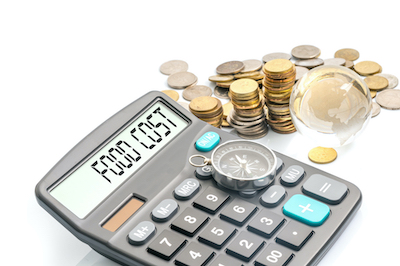In the dynamic landscape of personal finance, finding a budgeting strategy that works for you is crucial. Use the 70-20-10 budgeting rule, a simple yet powerful framework designed to guide your financial decisions and pave the way for a secure future. In this article, we’ll delve into the 70-20-10 rule, discuss what each category encompasses, question your financial trajectory for the month, and offer actionable steps to align with this rule for a healthier financial outlook.
Understanding the 70-20-10 Budgeting Rule
The 70-20-10 budgeting rule is a widely acclaimed financial guideline that allocates your income into three distinct categories – 70% for essentials, 20% for savings or debt repayment, and 10% for personal enjoyment or discretionary spending. Let’s break down each category to gain a deeper understanding of how this rule can revolutionize your financial habits.
1. The 70% Essentials:
This chunk of your income should be dedicated to covering essential expenses, such as housing, utilities, groceries, transportation, and insurance. Essentially, it encapsulates all the non-negotiables that sustain your daily life. By limiting this category to 70%, you ensure that you’re living within your means and leaving ample room for savings and personal enjoyment.
2. The 20% Savings or Debt Repayment:
The next 20% of your income is a powerful tool for securing your financial future. This segment should be directed towards savings, investments, or aggressively paying down outstanding debts. Building an emergency fund, contributing to retirement accounts, and chipping away at high-interest debts fall under this crucial category. Allocating a significant portion of your income to this area establishes a strong foundation for long-term financial stability.
3. The 10% Personal Enjoyment:
The remaining 10% is designated for personal enjoyment – the fun stuff! This category is your guilt-free spending zone, encompassing dining out, entertainment, hobbies, and other discretionary expenses. While it may seem modest, this portion ensures that you strike a balance between fiscal responsibility and enjoying the fruits of your labour. It’s a reward for your financial discipline and a crucial element in preventing budget burnout.
Assessing Your Financial Performance: Are You On Track?
Now that we’ve unravelled the layers of the 70-20-10 budgeting rule, it’s time for a self-assessment. Reflect on your financial performance for the month and ask yourself:
a. Essentials (70%): Are my essential expenses within the recommended 70%? Have I prioritized needs over wants in my spending habits?
b. Savings or Debt Repayment (20%): Have I successfully directed 20% of my income towards savings or repaying debts? Am I taking proactive steps to secure my financial future?
c. Personal Enjoyment (10%): Have I allowed myself the freedom to enjoy 10% of my income guilt-free? Have I struck a balance between financial responsibility and personal pleasure?
Steps to Achieve the 70-20-10 Budgeting Rule
If your self-assessment reveals deviations from the 70-20-10 rule, fear not. Here are actionable steps to guide you back on track:
1. Conduct a Comprehensive Budget Review:
a. List all your income sources and categorize your expenses.
b. Analyze your spending patterns and identify areas where adjustments can be made.
c. Ensure that your essential expenses do not surpass 70% of your income.
2. Prioritize Savings and Debt Repayment:
a. Set specific savings goals, whether for emergencies, retirement, or other financial objectives.
b. Automate your savings by setting up automatic transfers to dedicated accounts.
c. Tackle high-interest debts aggressively to minimize interest payments and expedite your journey to financial freedom.
3. Fine-Tune Your Personal Enjoyment:
a. Create a discretionary spending plan that aligns with the 10% guideline.
b. Look for ways to enjoy leisure and entertainment without overspending.
c. Embrace frugality and consider alternatives that bring joy without breaking the bank.
4. Embrace Flexibility and Adjustments:
a. Recognize that life is dynamic, and your financial plan should adapt to changing circumstances.
c. Regularly revisit your budget and adjust as needed to stay aligned with the 70-20-10 rule.
Conclusion
The 70-20-10 budgeting rule is not just a financial strategy: it’s a roadmap to financial empowerment. By conscientiously adhering to this rule, you create a robust financial foundation that balances responsibility with enjoyment. Take control of your financial destiny, assess your performance, and implement the recommended steps to seamlessly integrate the 70-20-10 rule into your financial routine. As you embark on this journey, remember that financial wellness is not a destination but a continuous evolution – and the 70-20-10 rule is your steadfast guide.


























